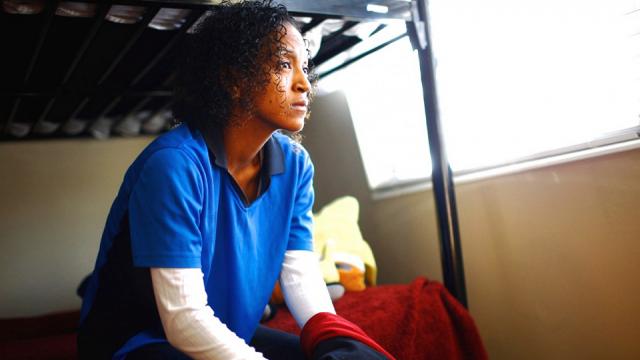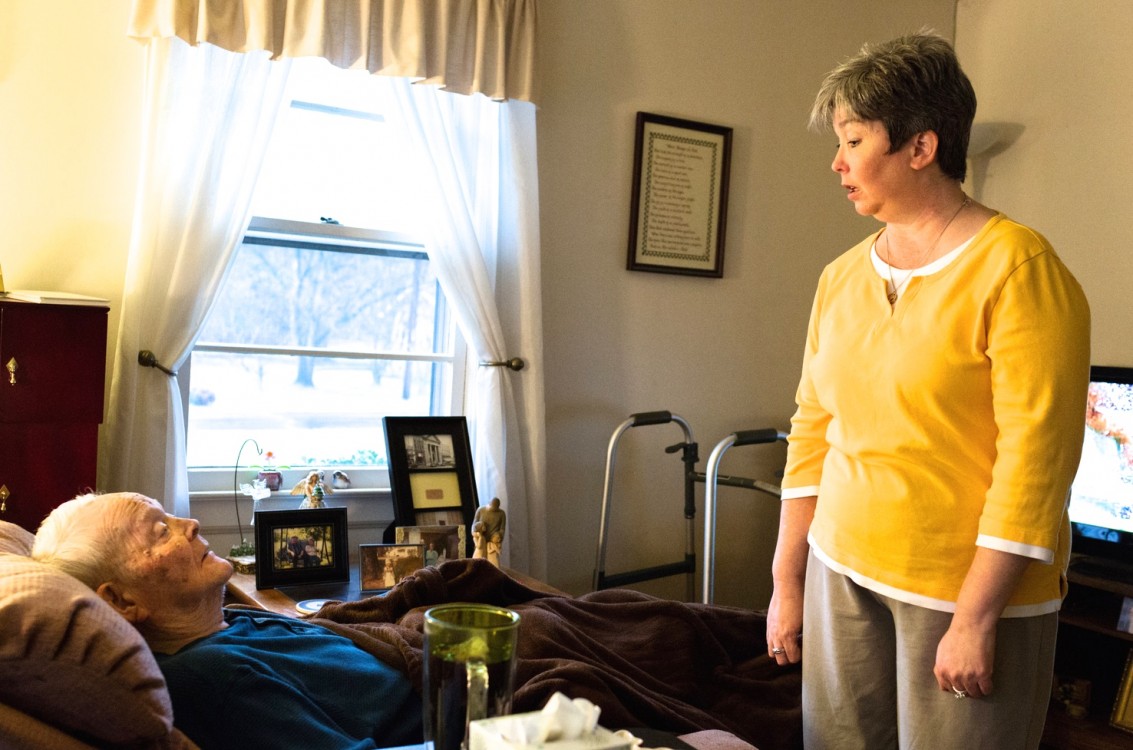
The middle class that President Obama identified in his State of the Union speech last week as the foundation of the American economy has been shrinking for almost half a century.
In the late 1960s, more than half of the households in the United States were squarely in the middle, earning, in today’s dollars, $35,000 to $100,000 a year. Few people noticed or cared as the size of that group began to fall, because the shift was primarily caused by more Americans climbing the economic ladder into upper-income brackets.
But since 2000, the middle-class share of households has continued to narrow, the main reason being that more people have fallen to the bottom. At the same time, fewer of those in this group fit the traditional image of a married couple with children at home, a gap increasingly filled by the elderly.
This social upheaval helps explain why the president focused on reviving the middle class, offering a raft of proposals squarely aimed at concerns like paying for a college education, taking parental leave, affording child care and buying a home.
“Middle-class economics means helping working families feel more secure in a world of constant change,” Mr. Obama told Congress and the public on Tuesday.
Still, regardless of their income, most Americans identify as middle class. The term itself is so amorphous that politicians often cite the group in introducing proposals to engender wide appeal.
The definition here starts at $35,000 — which is about 50 percent higher than the official poverty level for a family of four — and ends at the six-figure mark. Although many Americans in households making more than $100,000 consider themselves middle class, particularly those living in expensive regions like the Northeast and Pacific Coast, they have substantially more money than most people.
However the lines are drawn, it is clear that millions are struggling to hang on to accouterments that most experts consider essential to a middle-class life.
“I would consider middle class to be people who can live comfortably on what they earn, can pay their bills, can set aside something to save for retirement and for kids in college and can have vacations and entertainment,” said Christine L. Owens, executive director of the National Employment Law Project, a left-leaning research and advocacy group.
Lisa Land, 49, is one of those who have dropped through the hatch. She gets by on her father’s $1,300 monthly Social Security checks and by having her adult daughter pitch in for groceries.
Her circumstances are a stark change from just a few years ago, when she considered herself firmly in the middle class. Despite a relatively modest salary, her pay and other resources went a long way in tiny Eden, N.C., where she worked for 13 years in customer service at a textile factory.
In 2008, however, Ms. Land was laid off. Faced with ailing parents and a recession that tore up the region’s economy, she moved in with her father to offer full-time care.
“We wouldn’t have a lot of money, but we had everything that we needed,” she said. “Now, there’s really no extra for anything. No vacation. No dining out. No stuff like that.”
Even as the American middle class has shrunk, it has gone through a transformation. The 53 million households that remain in the middle class — about 43 percent of all households — look considerably different from their middle-class predecessors of a previous generation, according to a New York Times analysis of census data.
In recent years, the fastest-growing component of the new middle class has been households headed by people 65 and older. Today’s seniors have better retirement benefits than previous generations. Also, older Americans are increasingly working past traditional retirement age. More than eight million, or 19 percent, were in the labor force in 2013, nearly twice as many as in 2000.
As a result, while median household income, on average, has fallen 9 percent since the turn of the century, it has jumped 14 percent among households headed by older adults.
The growing prominence of older people in the middle class reflects, in part, the way Social Security and Medicare — originally set up as safety nets to protect seniors from falling into poverty after retirement — have provided a substantial cushion for them against hard times.
Married couples with children — who make up a category that is shrinking over all — are diminishing even faster as a share of the middle class. In the late 1960s, about 45 percent of all households included married adults and their offspring. But among middle-class households, more than 60 percent had that traditional family arrangement.
Today, married couples with children at home make up just a quarter of households. But even as they diminished as a share of the population, these families surged up the economic ladder as more married women went to work in the paid labor force. By 2000, 42 percent earned more than $100,000 in today’s dollars.
The most recent recession put a halt to the advances of even that generally successful group. Its share in the middle class has fallen by three percentage points and the share earning less than $35,000 has increased.
“In the Great Recession, we lost a lot of middle-income jobs and we gained a lot of low-paying jobs,” said Michael R. Strain, resident scholar at the right-of-center American Enterprise Institute. “That’s a slower-burning thing, but it increased in ferocity during the recession, and people are feeling it.”
For more than two decades, John D’Amanda, 54, earned about $30,000 a year running a window-washing service in Oakland, Calif. He had a car and an apartment. Then, in 2009, the calls stopped coming in. His customers no longer had the luxury of paying for someone to wash their windows.
Mr. D’Amanda got a job at a McDonald’s, where he has worked ever since, now earning 25 cents above the state’s new minimum wage of $9. He pays $350 a month in rent to share a small bedroom with a roommate.
“I’m barely able to afford that,” he said.
These days, most middle-class adults reached their status through higher education. As recently as 1992, half of all middle-class households were headed by someone with a high school education or less, according to the Times analysis. Today, only 37 percent of the middle class has not been to college.
Geography also matters. The biggest declines in middle-class households during the previous half-century occurred in the Northeast — states like Massachusetts, Connecticut and New Jersey — where industrial economies gave way to mass suburbanization and increased affluence.
According to a New York Times poll in December, 60 percent of people who call themselves middle class think that if they work hard they will get rich. But the evidence suggests that goal is increasingly out of reach. When middle class people look up, they see the rich getting richer while they spin their wheels.
“The middle has basically stayed the same; it hasn’t improved,” said Lawrence F. Katz, an economist at Harvard University. “You’ve got an iPhone now and a better TV, but your median income hasn’t changed. What’s really changed is the penthouse has become supernice.”
Still, there are some recent signs of hope for the middle class. The economy is improving and more jobs are being created, many of them in better-paying categories like professional services, health care and even a reviving manufacturing sector.
Jason Pappas’s prospects, for example, are looking up. Mr. Pappas, 32, from Muncie, Ind., was earning about $42 an hour as an iron worker in the mid-2000s, but building projects dried up during the recession, pushing him onto the unemployment rolls for a year and a half.
He eventually found a job as a truck driver. Today, he earns just over half the hourly wage he made as an iron worker, but he is happy to have a steady job.
“It pays the bills,” he said, “and I have medical insurance.”
Moreover, Mr. Pappas just learned that he was being promoted to supervisor. Soon, with overtime, he’ll be earning $80,000 a year.
He is feeling a lot better about his future. “Hard work pays off,” Mr. Pappas said.
3 WAYS TO SHOW YOUR SUPPORT
- Log in to post comments














